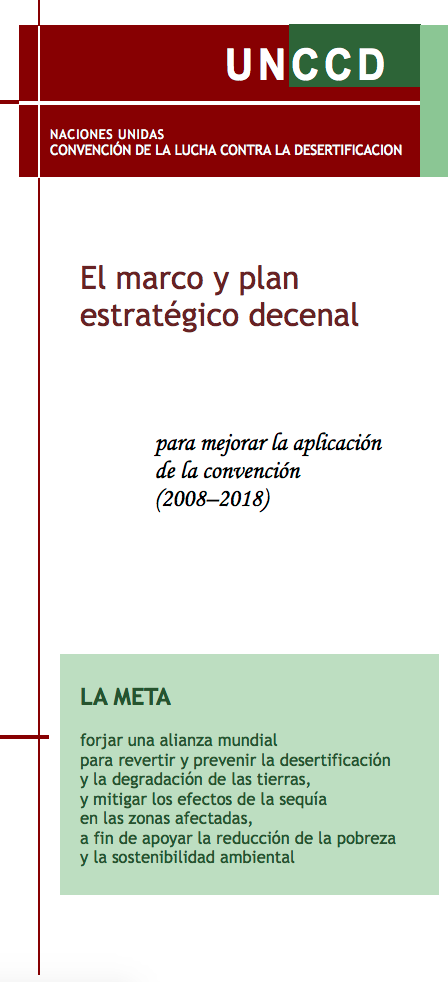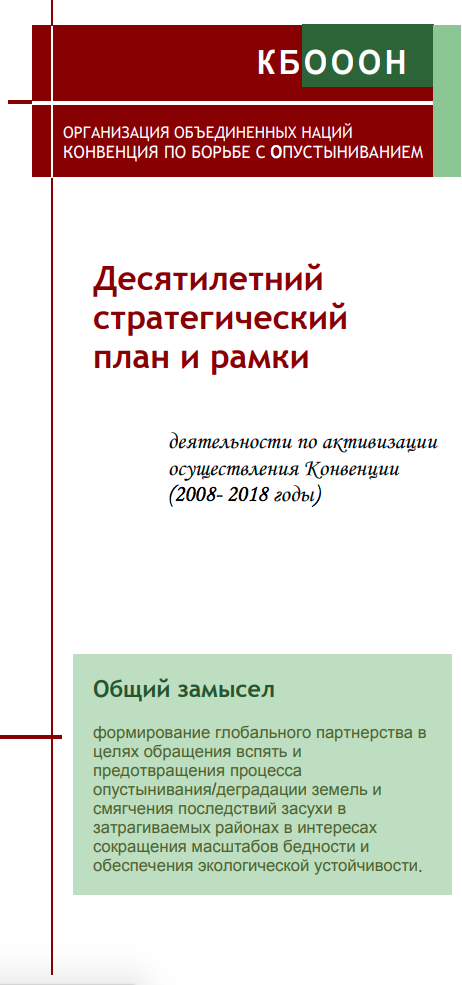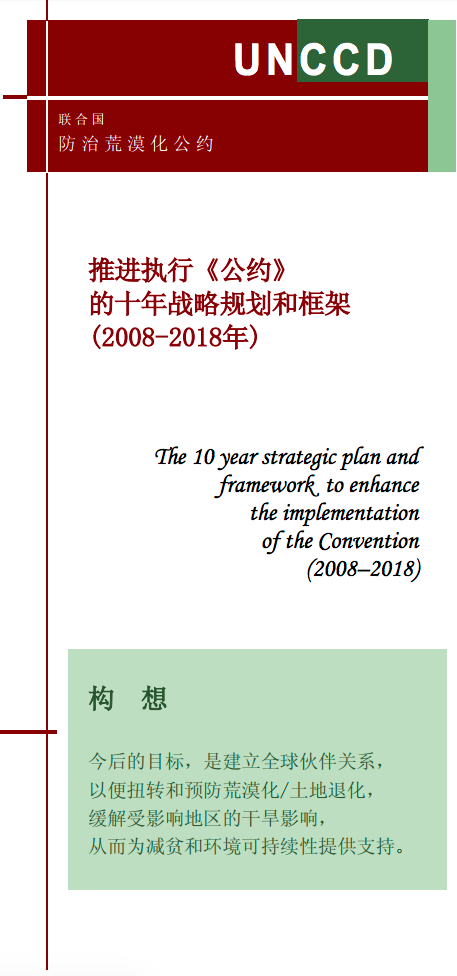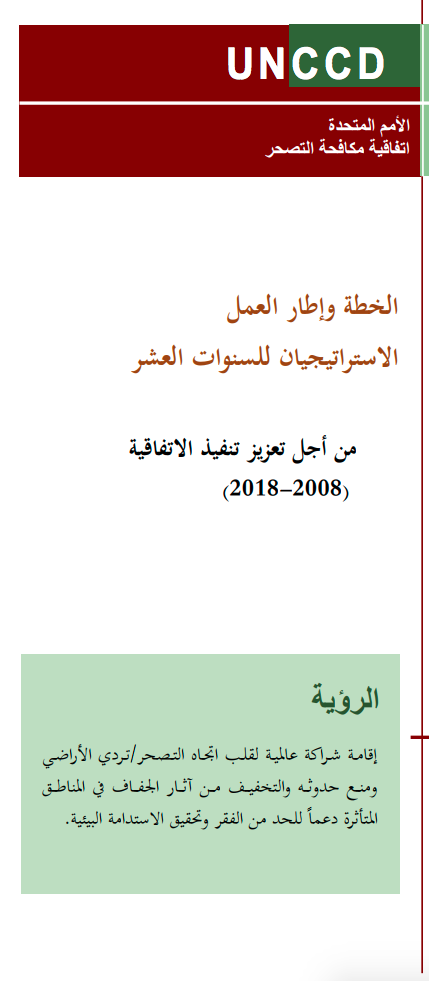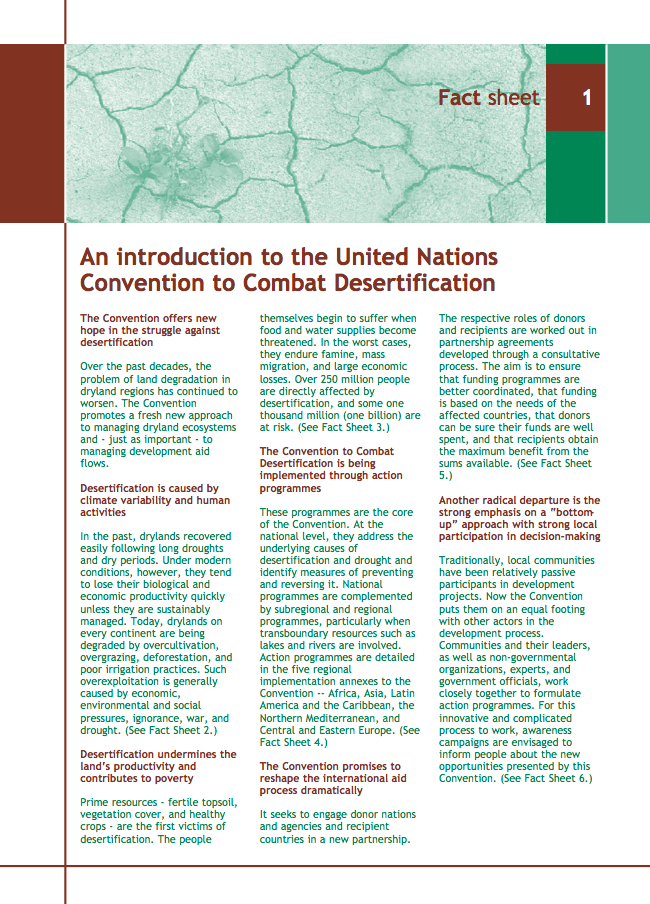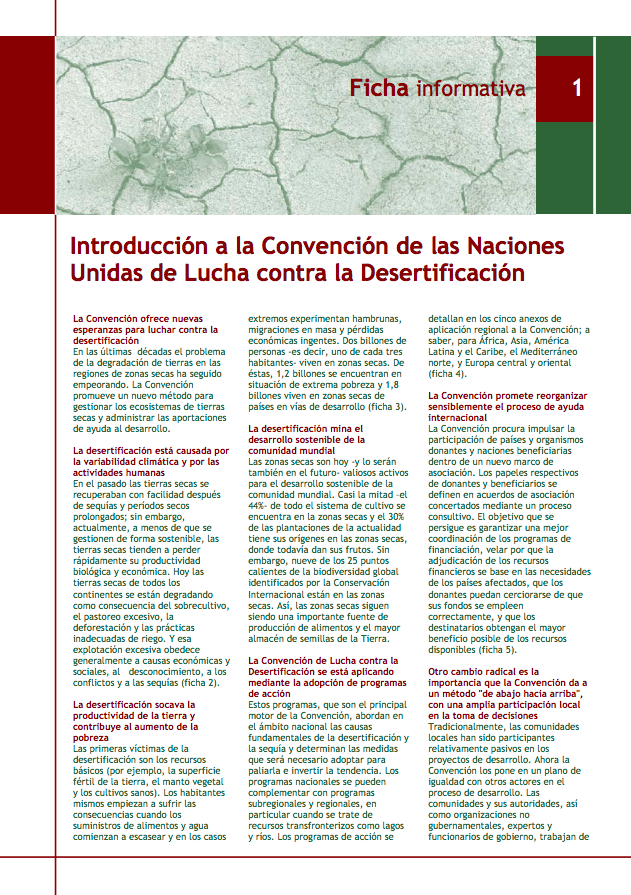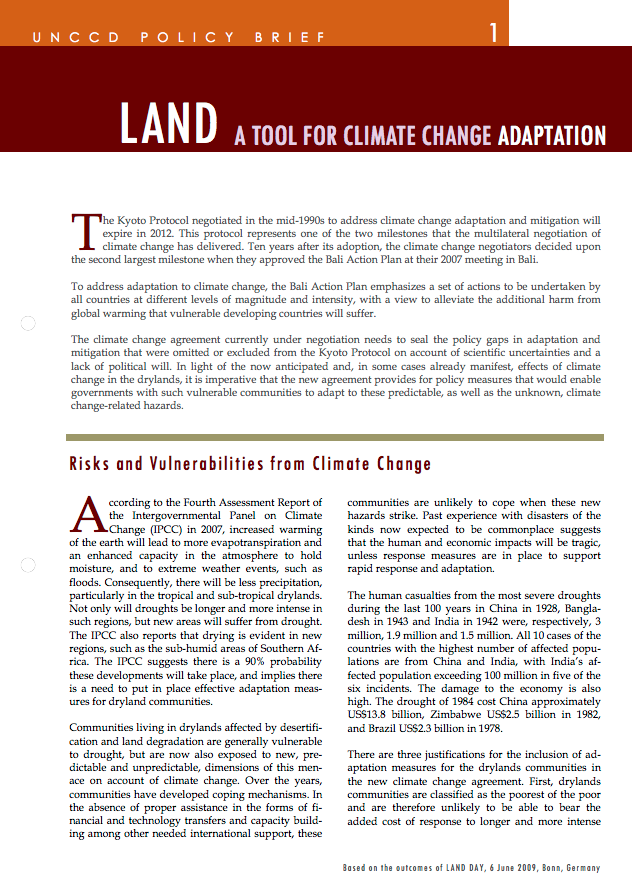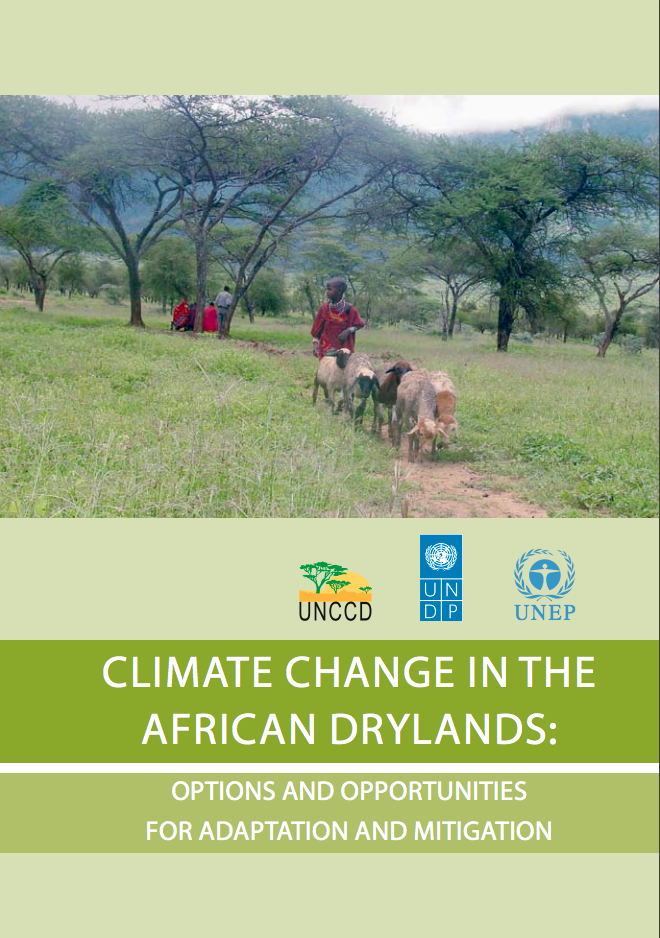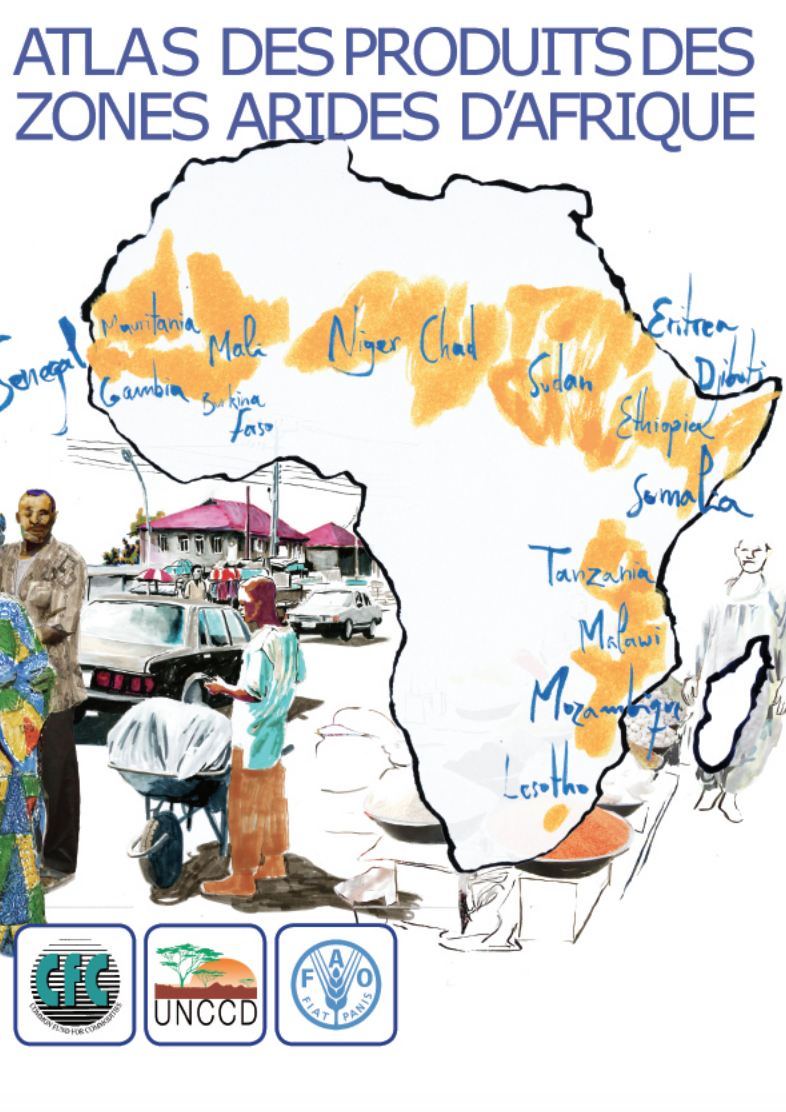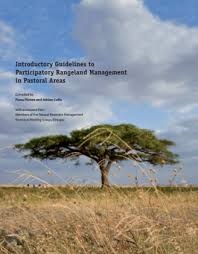El marco y plan estratégico decenal para mejorar la aplicación de la convención (2008–2018)
LA META forjar una alianza mundial para revertir y prevenir la desertificación y la degradación de las tierras, y mitigar los efectos de la sequía en las zonas afectadas, a fin de apoyar la reducción de la pobreza y la sostenibilidad ambiental

